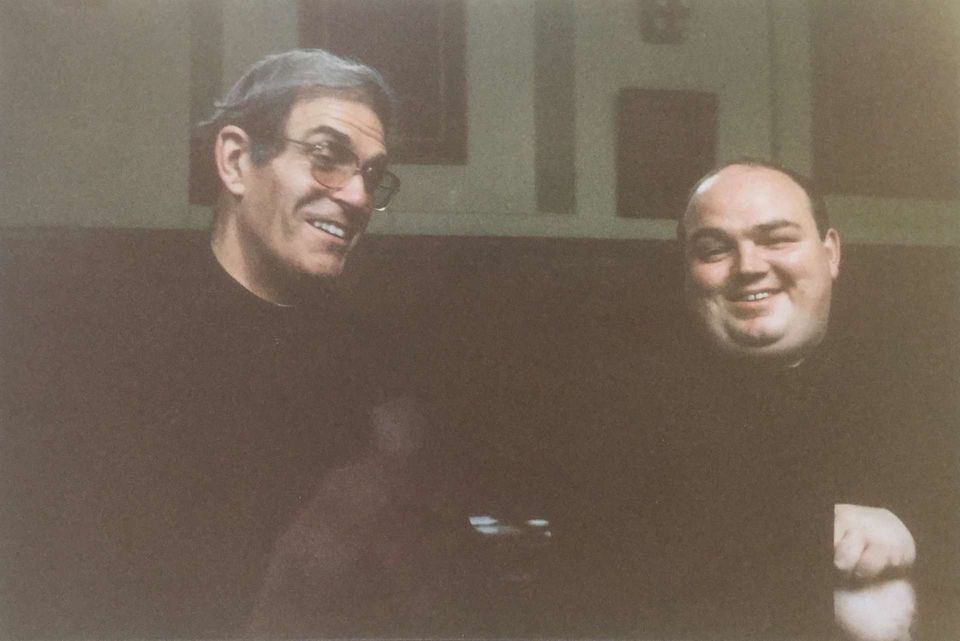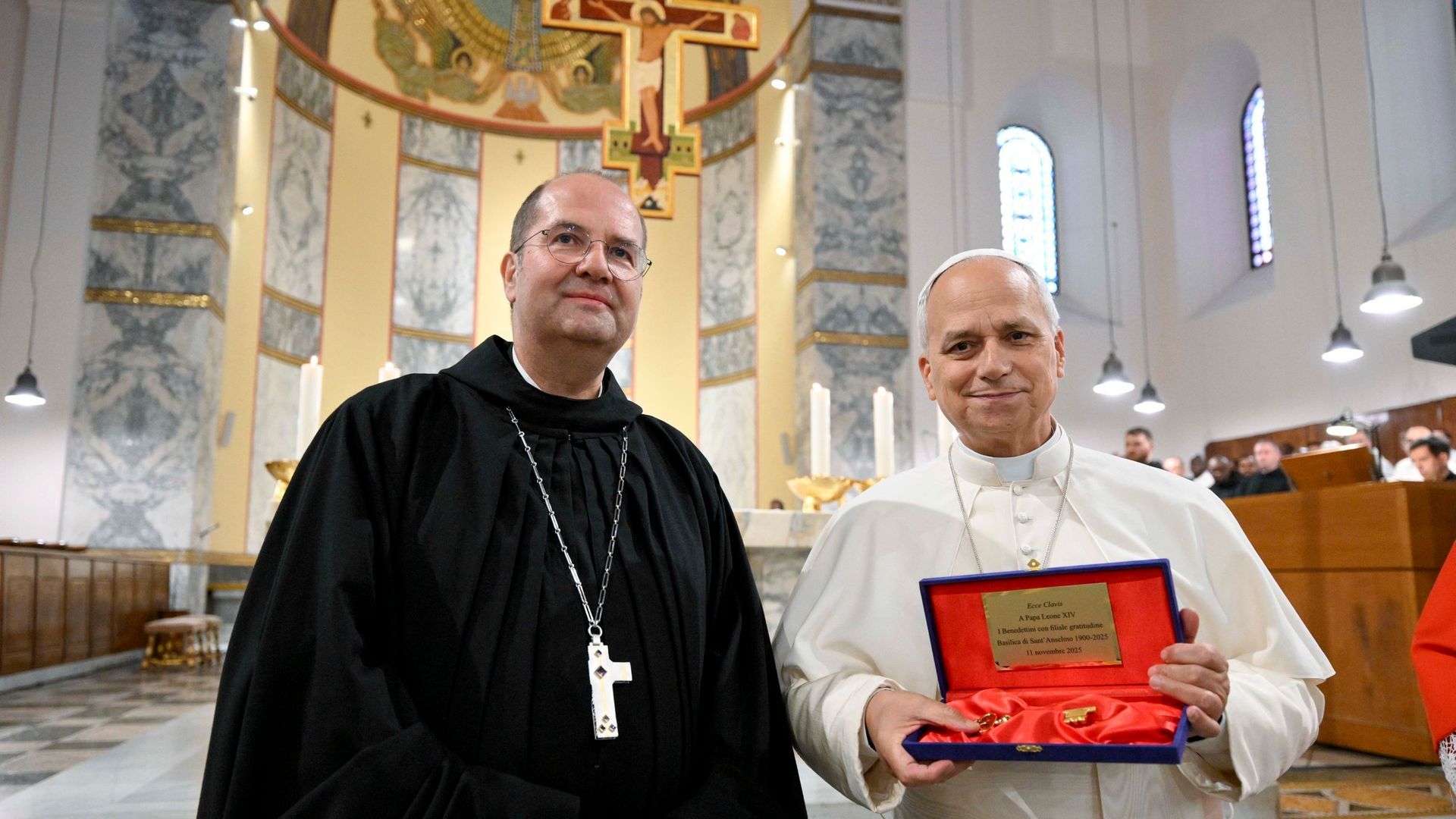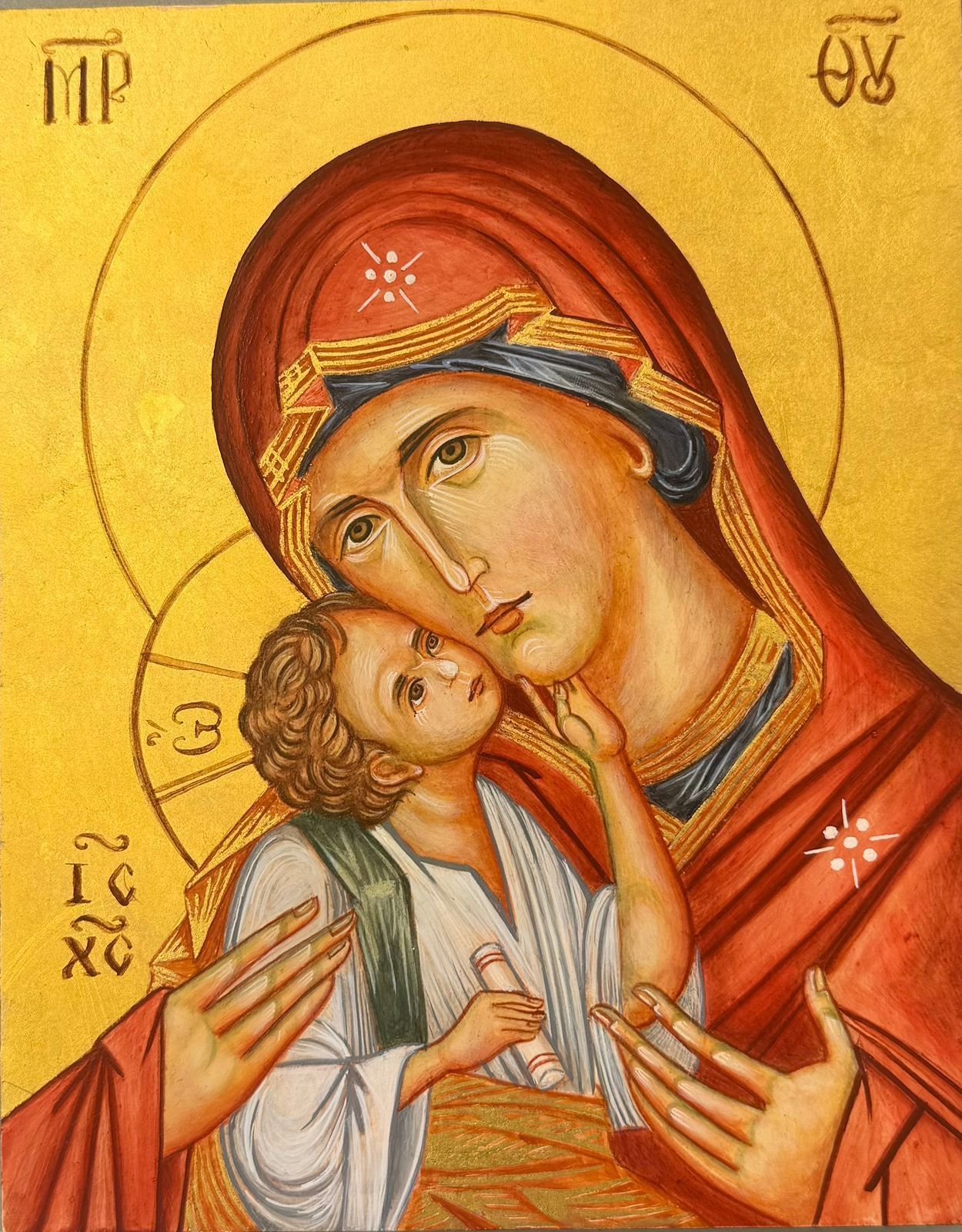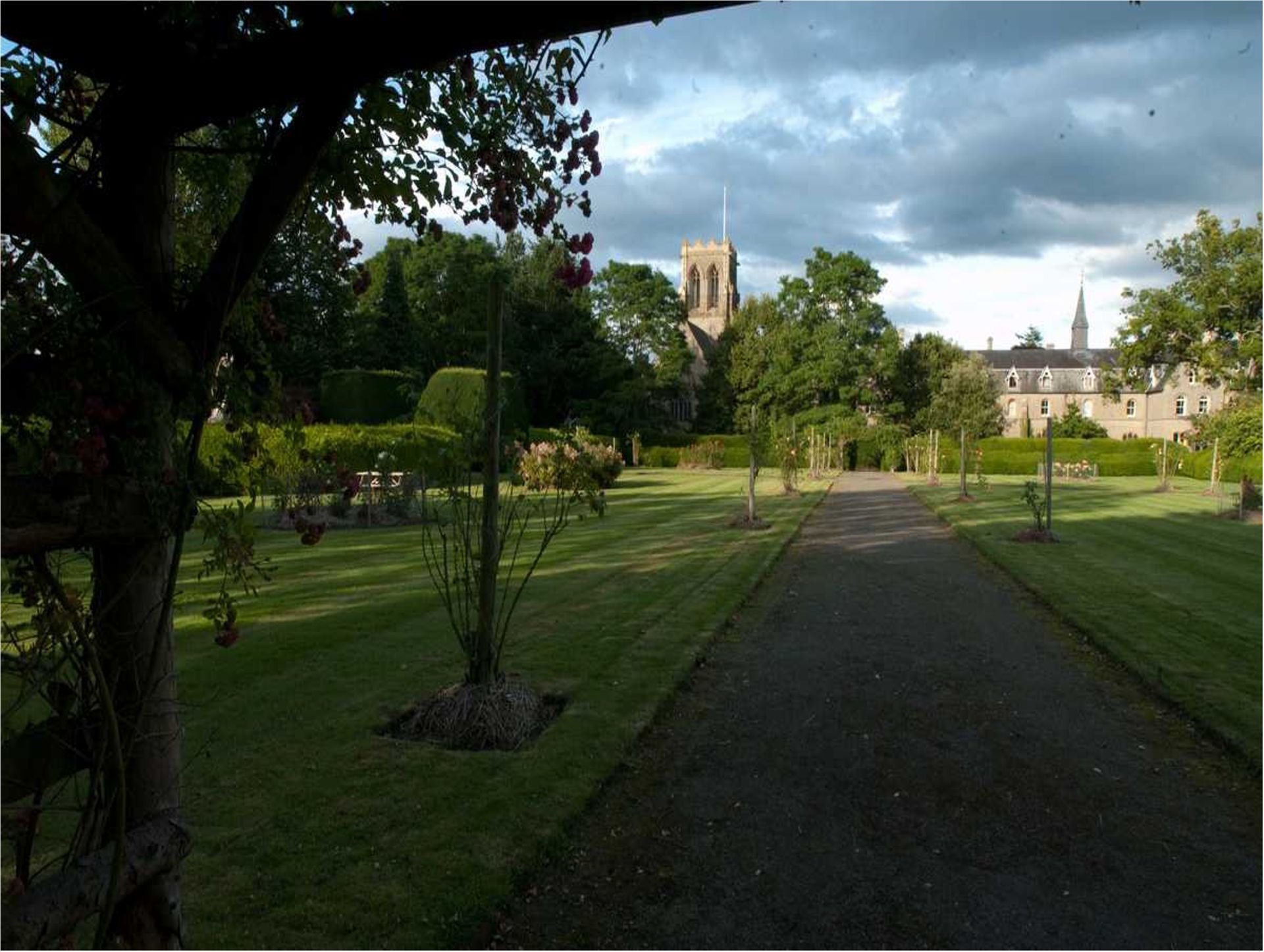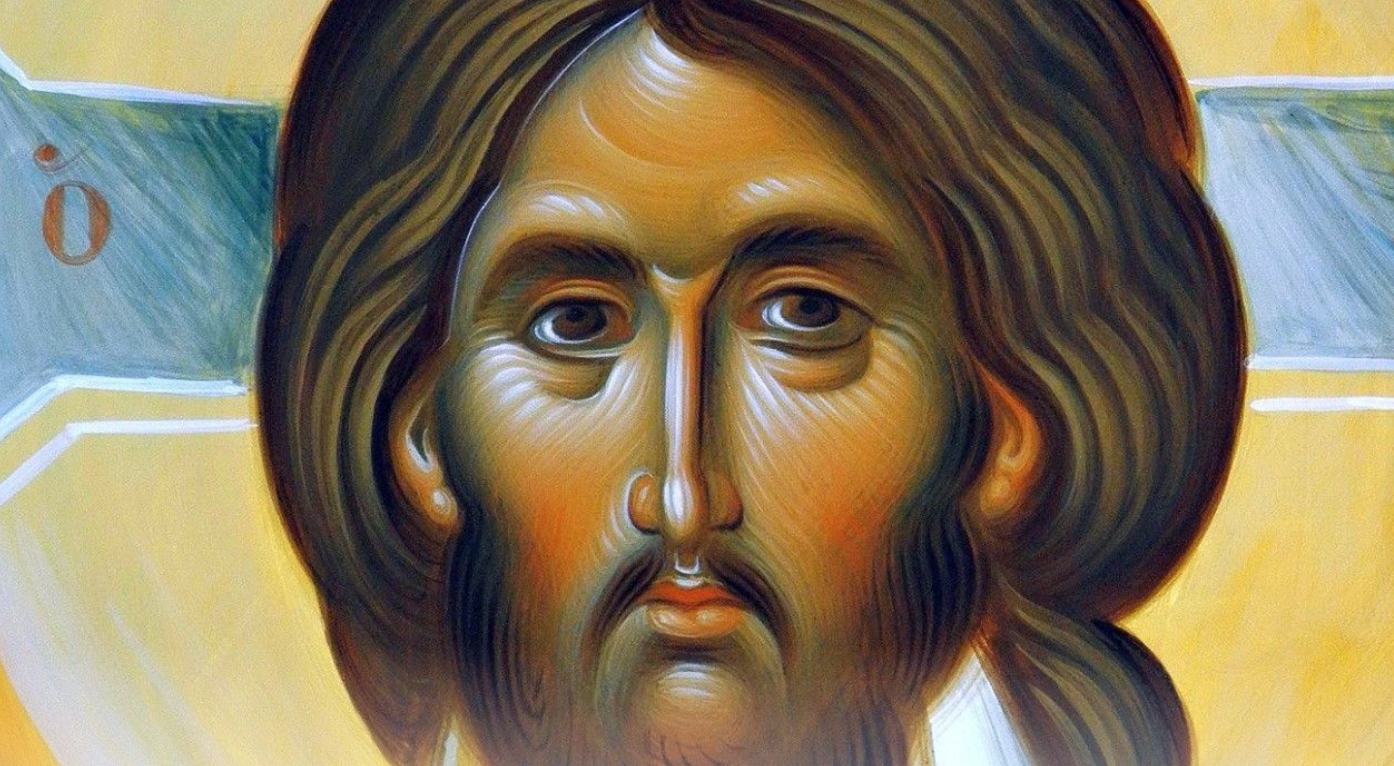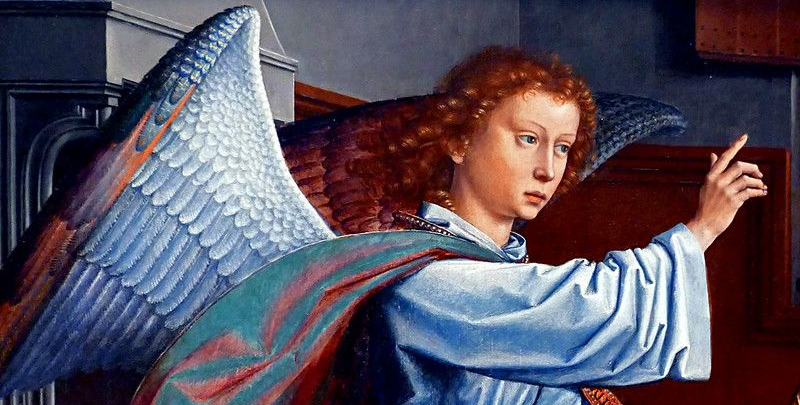Dom Laurence Beer
Originally from Cardiff, Fr Laurence, or David as he was also know, was ordained a priest at Monte Cassino in 1958 and spent most of his monastic life serving as a military chaplain for the Royal Air Force and latterly the US Airforce. His death brought with it many testimonies from those he loved and served so well.
On the bedside cabinet in his monastic cell here at Belmont, Fr Laurence kept a small book, in which he had copied, since the days of his noviciate, short, pithy sayings that might help his spiritual life. One was from the Ancrene Riwle, written for anchoresses in early 13th century England: it can be found on his memorial card, and surely sums up his life. “All this world is God’s smithy, for to forge his chosen ones.” God truly does forge us in the furnace of life, and no one more than Fr Laurence. St Paul writes to the Romans that, “if in union with Christ we have imitated his death, we shall also imitate him in his resurrection,” while St Benedict concludes the Prologue to his Rule by saying that if we faithfully observe the teaching of Christ in the monastery until death, then we shall “through patience share in the sufferings of Christ that we may deserve also to share in his kingdom.”
David Vaughan Beer was born in Roath, Cardiff, on 21st May 1931 and was brought up by his parents as a practising Anglican. His parish church was the magnificent and prayerful St German’s, in its heyday the cathedral of Welsh Anglo-Catholicism. As a result, David was a somewhat spikey youth. He was a pupil at Marlborough Road School, where one of his teachers was Thomas George Thomas, the future Lord Tonypandy. He then took his school certificate at Cardiff High School, after which he worked at the King Edward VII Welsh National Memorial Association. Like all young men at the time, he did National Service, in his case at the School of Infantry, Warminster, and this was followed by a stint working for the Territorial Army. It was at St George’s, Warminster, while serving in the Army, that David was received into the Catholic Church on 20th June 1951 by Fr Joseph Sutton. He was confirmed at Downside Abbey on 7th March 1952, taking the Confirmation name Michael. By that time he was thinking of a monastic vocation and was advised by Dom Rudesind Brooks to try his vocation at Belmont. In recommending David, he wrote to Abbot Anselm Lightbound, saying, “He is really a very promising young man, and, coming as he does from S. Wales, I would like to see Belmont have him.”
David was clothed as a novice, together with Bishop Mark Jabalé and Dom Illtud Barrett, by Abbot Anselm on 28th September 1952, taking the name Laurence, after the early Roman martyr, who can been seen on his memorial card. He made his First Profession under Abbot Alphege Gleeson on 29th September 1953 and, three years later, his Solemn Profession under Abbot Maurice Martin. He was sent to continue his studies at Sant’Anselmo, the Benedictine College in Rome, where he achieved a very high standard and was awarded Licences, summa cum laude, both in Philosophy and Theology. He was much liked both by his professors and by the student body and was particularly admired for his monastic observance and his dedication, not only to study, but also to community life and all that it entails. He had a beautiful voice and loved Gregorian chant, so was a valued member of the schola. He was ordained a sub-deacon at the Bavarian Abbey of St Ottilien in 1956, together with Viktor Dammartz, who would one day become Abbot Primate, then a deacon at Belmont by Archbishop Michael McGrath in 1957 and, finally, a priest at Montecassino on 2nd July 1958 by Bishop Cesare D’Amato, Abbot of St Paul outside the Walls.
As a junior monk at Belmont from 1953 to 1955, he worked as Headmaster’s Secretary, Guestmaster, Sacristan and Master of Ceremonies. When he returned from Rome in 1960, he was appointed Abbot’s Secretary and Librarian and taught some Philosophy and Theology. He also did supplies in the Archdiocese of Cardiff, as did many of the brethren at the time. So it was that in July 1962, Fr Laurence came to the small South Wales parish of Briton Ferry, where he met and befriended a lad of 15. That was me. As far as I could make out, all the clergy in the Archdiocese were Irish, all good men, let it be said, and, in my neck of the woods, the Catholic Church was known as the Paddies’ Church, so it was quite a surprise to meet a priest and a monk who spoke like a perfect English gentleman, but happened to be Welsh. It was the Old Mass, of course, and Laurence celebrated it beautifully, like no one else. He was kindness itself and so charming and cultured that he made a great impression on me. He came to tea with my parents and, with their permission, invited me to visit Belmont: so began the story of my own vocation, for which I am eternally grateful. By the way, it is a well-known fact that he was also an intuitive and successful matchmaker, several happy marriages owing their initial introduction and encouragement to him.
However, things were not all well at Belmont, at least where Laurence was concerned. He had not been given enough serious work to do or even a real job, so his life lacked that balance and depth which he needed to survive and grow in the monastic life. He hankered after a more ordered and disciplined lifestyle, his mind turning to the military life he had once known. He had been asked by the Abbot Primate to remain at Sant’Anselmo and work with him there, but Abbot Maurice refused to give his permission. So it was that Laurence practically ran away from Belmont, eventually becoming a Military Chaplain in the Royal Air Force. He was commissioned on 11th January 1966 and served as Chaplain to the RAF until 20th May 1986, attaining the rank of Group Captain. He served in the United Kingdom, Germany and Cyprus with distinction and devotion, touching the lives of countless airmen and their families, as well as his fellow chaplains and others besides. In 1986, having reached the age of 55, he had to retire from fulltime, active service as an RAF chaplain, but retirement was not to mark the end of his much-valued ministry. From 1986 for the next 28 years he served both with the USAF and the RAF as an Officiating Chaplain and as a priest on the supply list for the Diocese of Clifton. In November 1986 he was granted the Ecclesiastical Endorsement of the U.S. Archdiocese of the Military Services to serve as an Auxiliary Chaplain at RAF Fairford, at that time being used by the Americans. So Laurence, or rather David as he was known, continued to serve as a chaplain both with the Americans and the British, moving from Fairford to High Wickham to Brize Norton and then back to Fairford again, where he frequently supplied for Fr Smith. His death has brought with it many testimonies from those he loved and served so well.
In latter years, as chaplaincy and supply work were made almost impossible through ill health, Laurence commuted between Shrivenham, where he had gradually taken up residence in the home of his old friend Teresa Hurley, and Belmont, where he would stay each month for a week or so. You could say, in the very best sense of the term, that he lived a double life, or perhaps two separate lives, joined together by the umbilical chord provided by the A417 and A 49. At Belmont, he was the quiet, austere monk, who was semi-retired from his former life and yet still busy doing supplies here and there and much in need. From Shrivenham, his ministry spread forth to cover not only nearby military bases, but also a number of parishes and countless friends and acquaintances. He was sought after for his friendship and sound spiritual council. He was a particular favourite with old ladies and was exceptionally kind and patient with them. In fact, his kindness knew no limits. Whether he was known as Laurence or David, he was always fun to be with: he possessed an infectious sense of humour, a lovely smile and a playful twinkle in his eye. He read widely and seemed to be interested in absolutely everything, including gastronomy. That love of reading remained with him until he suffered a stroke in Swindon Hospital on 10th October, after which even conversation became more and more difficult, till only a few words and that radiant smile remained. Until that fateful day, although his body was spent and he was at times in acute pain, his mind, interests and conversation were those of a young man.
Laurence had never enjoyed good health. Even the end-of-year reports from the dean of studies at Sant’Anselmo speak of his struggle with ill health. The amazing thing is that he accomplished so much in life despite his many infirmities. In the past ten years he seemed always to be in and out of hospital as his frail body was subjected to various operations. During this time Teresa acted as housekeeper, nurse, carer and chauffer, as well as companion and friend. We are deeply grateful to her for her dedication and love. Then three months’ ago, he was finally admitted to hospital for a knee replacement with that typical enthusiasm of his and the hope of suffering less pain as a result, thus being less of a nuisance to others and being able to walk unaided once more. Unfortunately, this was not to be, but not once did he show impatience or frustration at the lengthy process that, to the rest of us, seemed to be leading nowhere. Those who visited him came away encouraged and renewed by his joyful spirit and resilient good humour. He survived so many narrow misses that it is difficult to believe that he has finally left us. Yet, ultimately, that was his goal, the goal of all Christians, but especially of a Benedictine monk, to live a holy life in order to die a holy death. For Laurence death was not an unwelcome visitor, for “all the world is God’s smithy, for to forge his chosen ones.” The forging was complete.
I mentioned the fact that he had lived two separate lives. What brought them together and made them one was his intense life of prayer, his commitment to the Catholic Church with her liturgy and doctrine, his fidelity to and love of tradition, especially the English Benedictine tradition, his loving care for souls and his tender devotion to Our Lady. Nor was he ever known to criticize anyone, such was his spirit of charity. He had a phenomenal memory when it came to birthdays, anniversaries and feast days, with cards and messages of encouragement being sent all over the world. Although he was a very private and mysterious person, even to those closest to him, he also respected our privacy in his gentle, courteous way. Each one of us here today will have memories of his kindness and friendship to cherish and emulate.
So it is that we now commend his soul to God’s mercy and forgiveness. The wheat grain has fallen to the ground and died. Shortly he will be buried in our cemetery with his fellow monks: in fact, he will share a grave with Fr Illtud. We pray that his death may yield a rich harvest, both for himself in heaven and for ourselves on earth. In today’s Gospel, Jesus said, “If a man serves me, he must follow me; and where I am, there will my servant be.” Fr Laurence served Christ faithfully throughout his life, in a quite unique and idiosyncratic way. He also suffered with Christ, for he was often in great pain, borne with patience and good humour. We pray that God will be merciful to him and grant him eternal rest. Amen.

